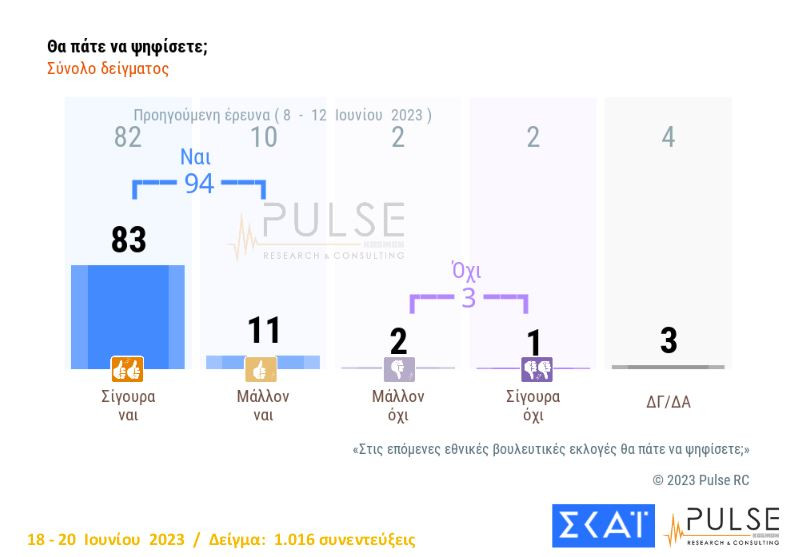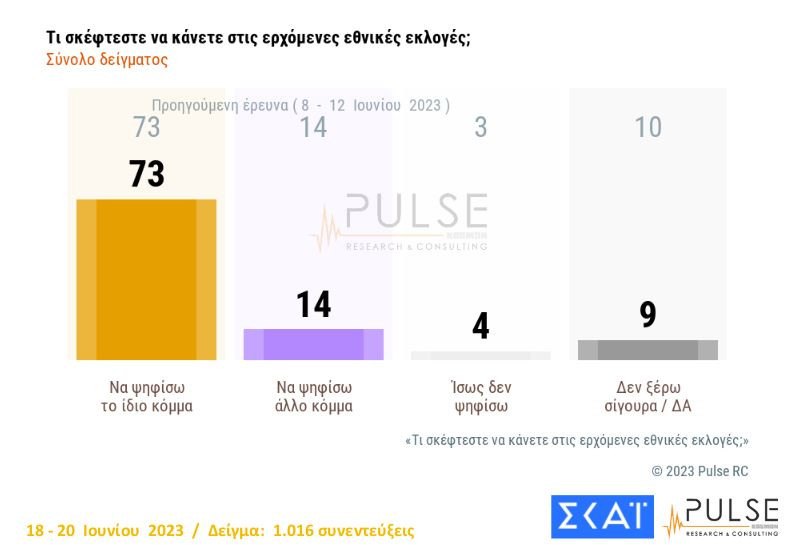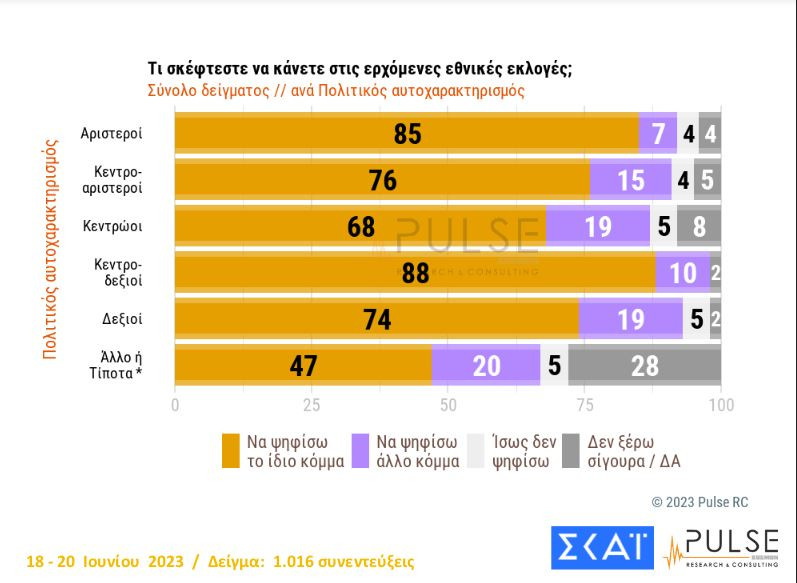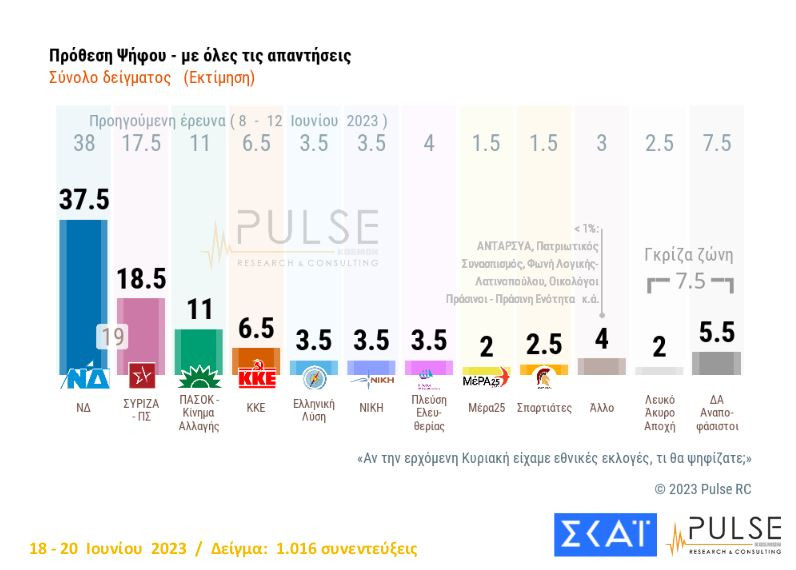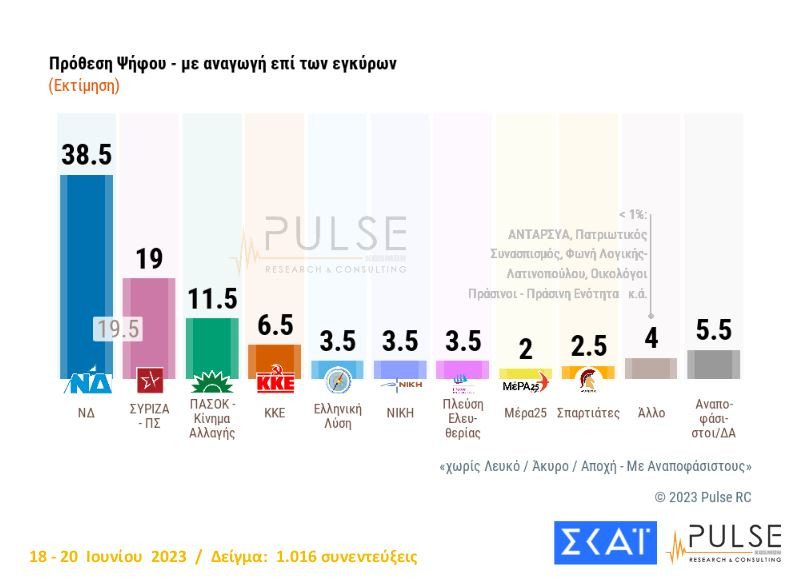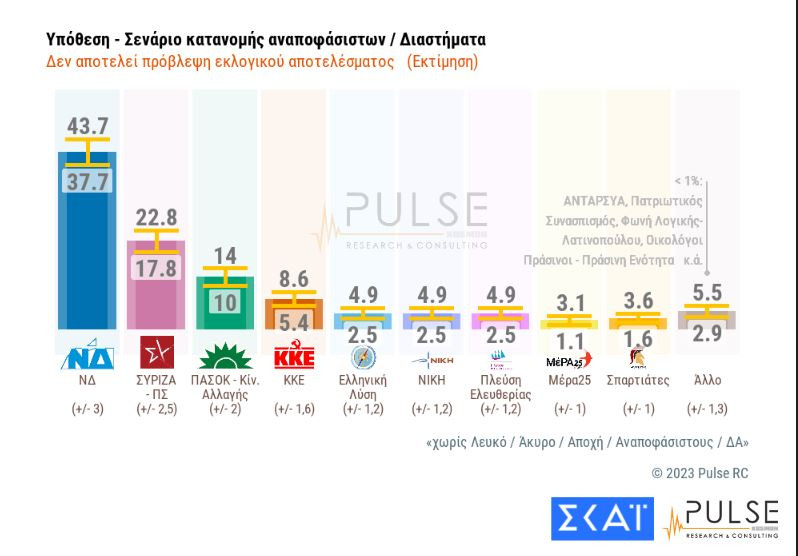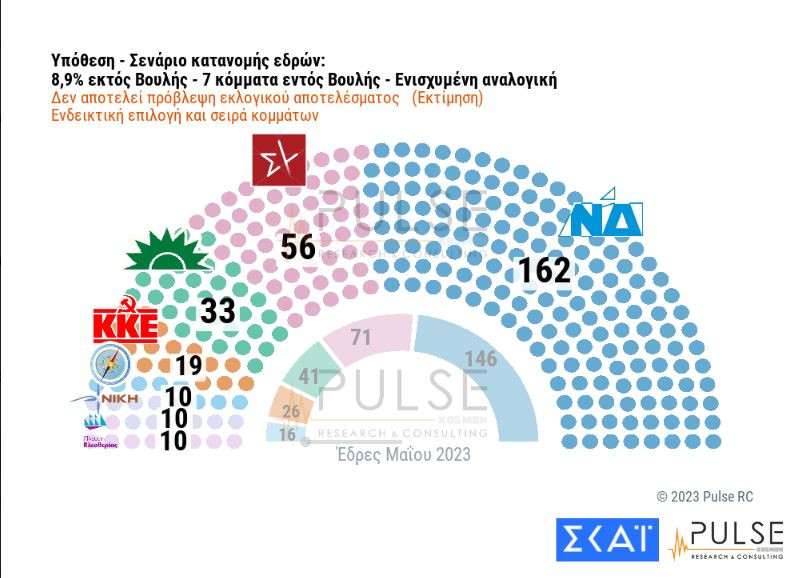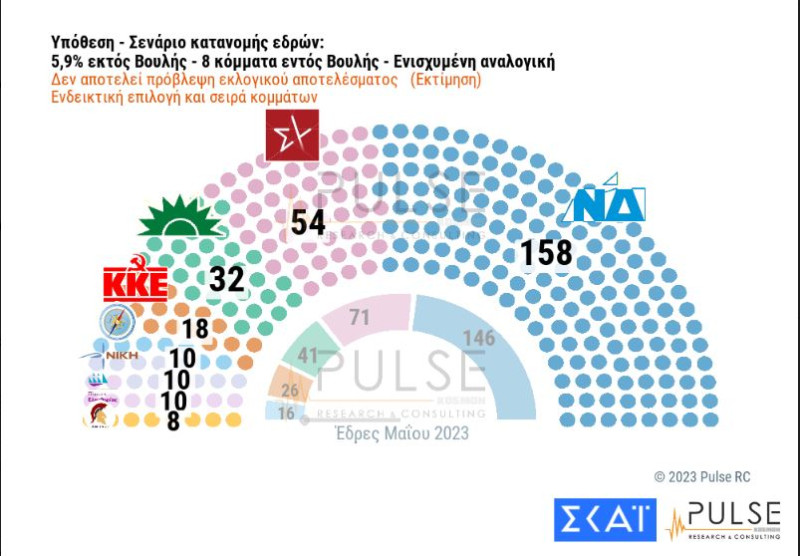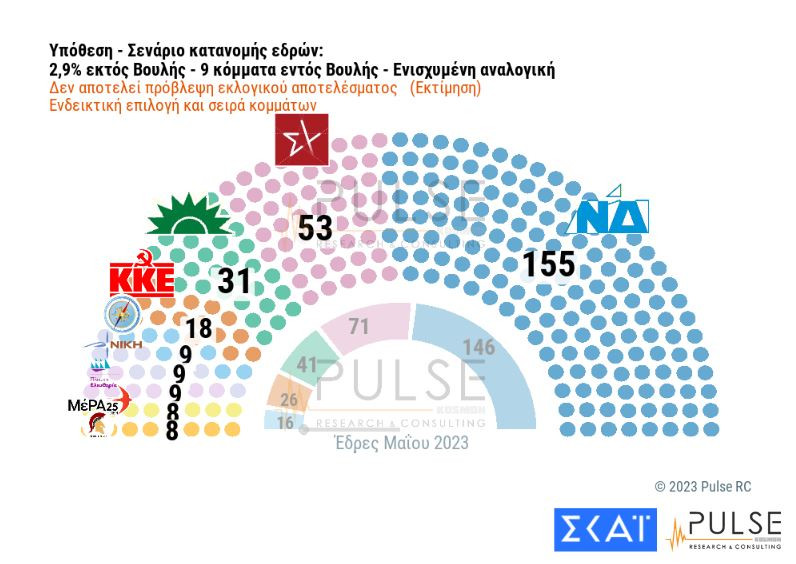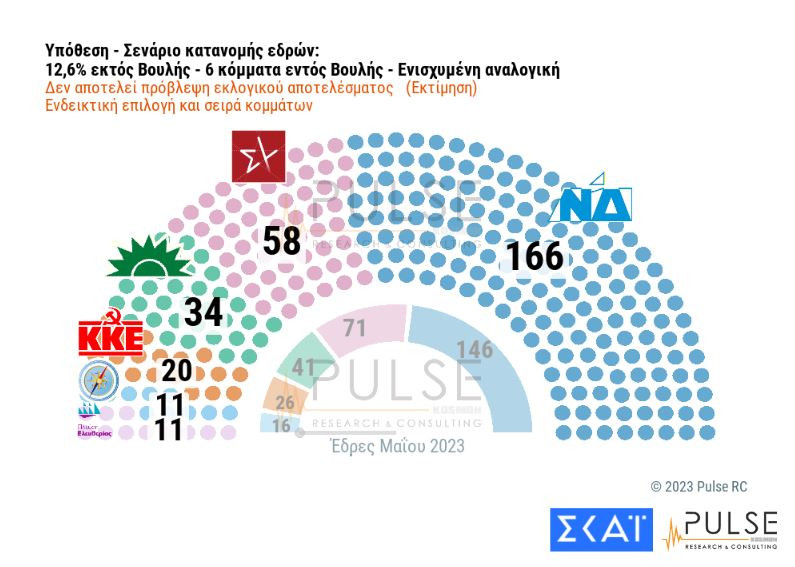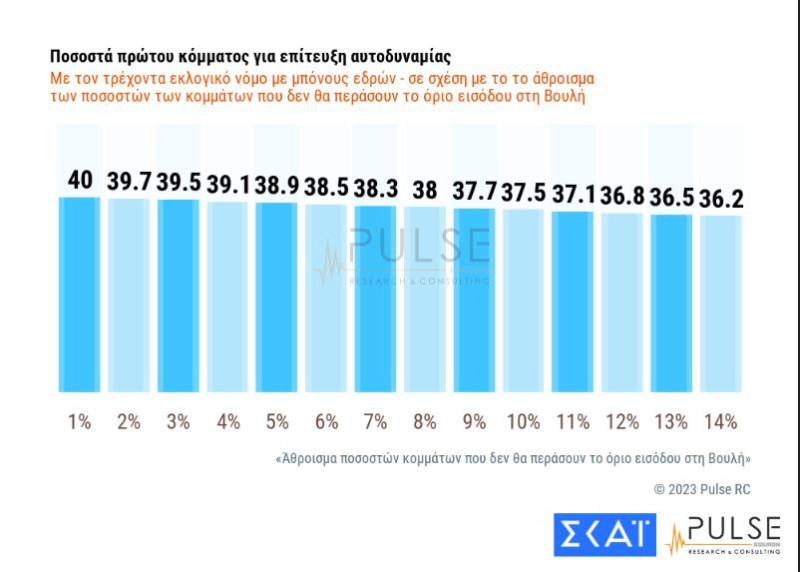73% will vote for the same party – Just 14% will change their vote – Self-reliance of the ND with all the cases – The alternative seat distribution scenarios
At 19.5%, it gives the difference between New Democracy and SYRIZA the poll conducted by the company Pulse on behalf of SKAI, three 24 hours before the polls opened on June 25.
The poll, which he presented Sia Kosioni in the main bulletin of SKAI, analyzes the latest data and captures all seat allocation scenarios, even for a Parliament with nine parties. The common denominator of all the scenarios in the Pulse poll is the self-reliance of New Democracy, as the difference from the runner-up SYRIZA is estimated to be around 20 points.
The survey was conducted on a sample of 1,016 adults with the right to vote, between June 18 and 20.
Initially, the question was raised as to what the voters prefer in the event that a self-reliant government does not emerge (even though all scenarios show the ND’s self-sufficiency). Almost 60% of the respondents answered that they want a cooperation government, while 32% said that we should go to a new electoral process.
And 94% of the respondents stated that they will go to vote again.
73% will vote for the same party – Only 14% will change
The question of how many of the voters will vote for the same party as on May 21 and how many will change is of particular interest in shaping the result and the difference – especially between the first and the second. A large majority, 73%, said they would vote for the same party and only 14% would switch to other options.
At 39.5%, the difference between ND and SYRIZA with a reduction on the valid ones
New Democracy, one month after the May 21 elections, seems to maintain the difference of -almost- 20 points from SYRIZA. In the intention to vote by recalling the valid ones, ND collects 38.5% of preferences and SYRIZA 19%, setting the difference at 19.5%. PASOK collects 11.5%, KKE 6.5%, Hellenic Solution 3.5%, Victory 3.5%, Freedom Sailing 3.5%, while below the 3% limit are MERA25 and the Spartans.
All seat allocation and undecided scenarios
The Pulse survey presented all scenarios, even for a Parliament with nine parties. The basic scenario envisages 7 parties, however the common denominator, in any case, is the independence of the New Democracy, with seats ranging from 155 to 166, depending on the number of parties that “catch” the threshold for their entry in Parliament.
Also of interest is the estimation of the percentage of parties, then the integration of the possible distribution of undecideds.
The alternative scenarios for nine parties and six parties in Parliament
Source: Skai
I have worked in the news industry for over 10 years. I have been an author at News Bulletin 247 for the past 2 years. I mostly cover politics news. I am a highly experienced and respected journalist. I have won numerous awards for my work.


